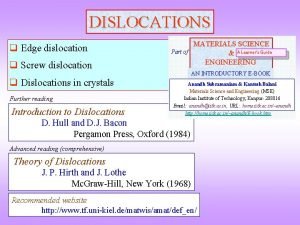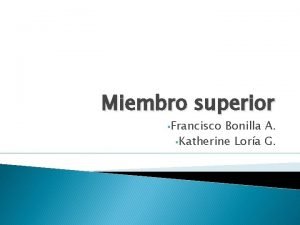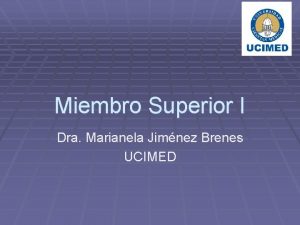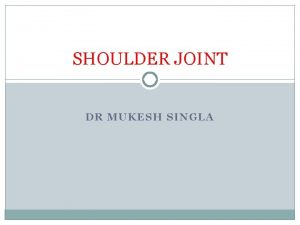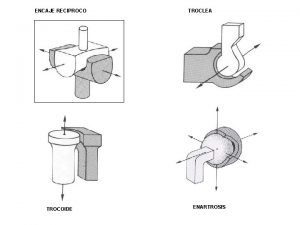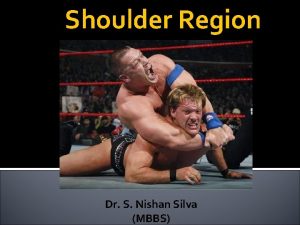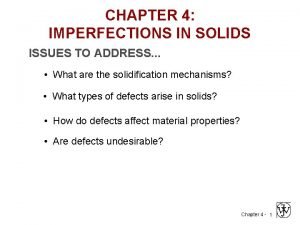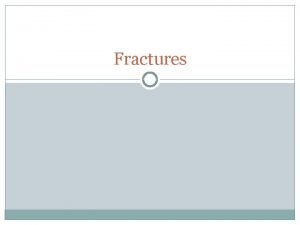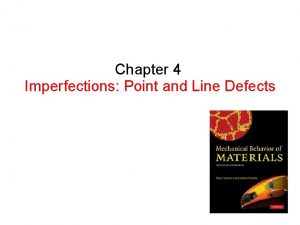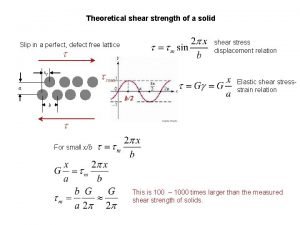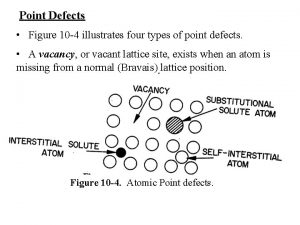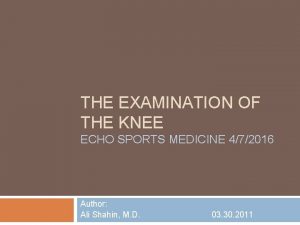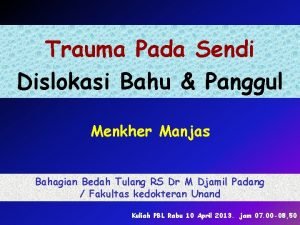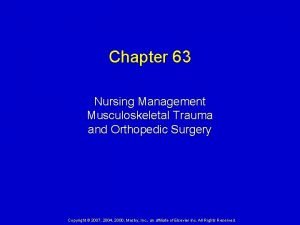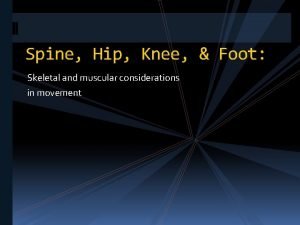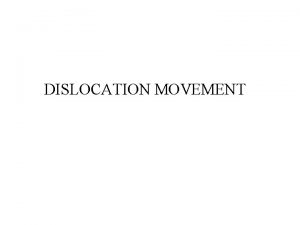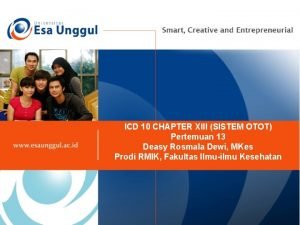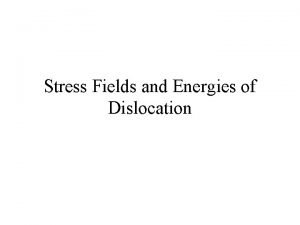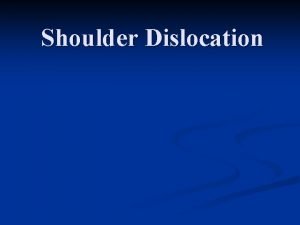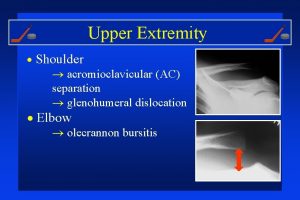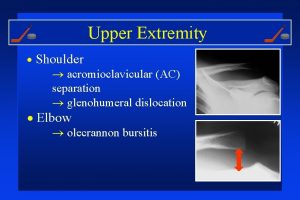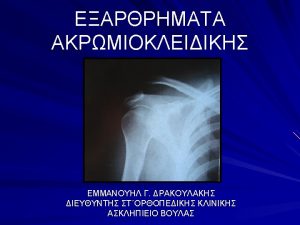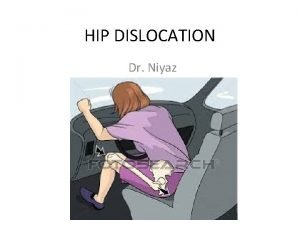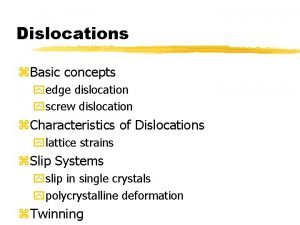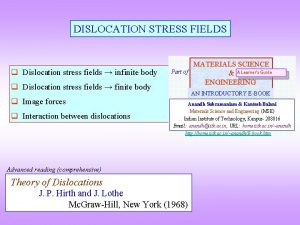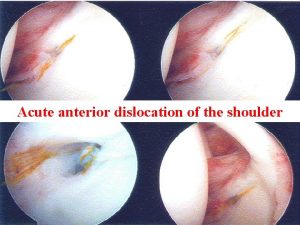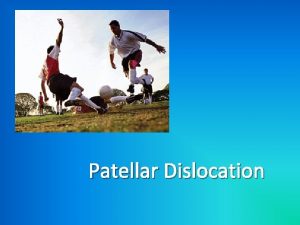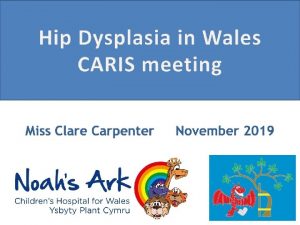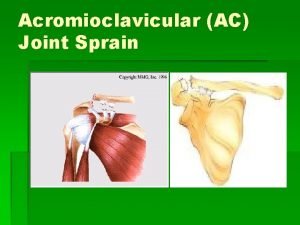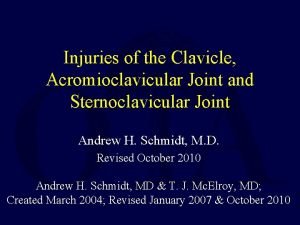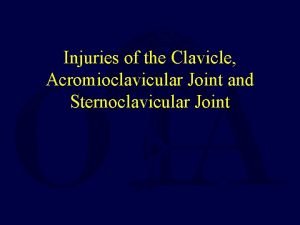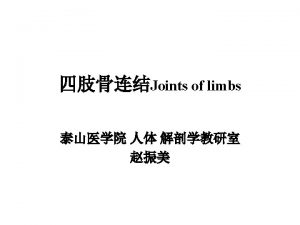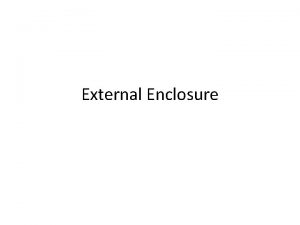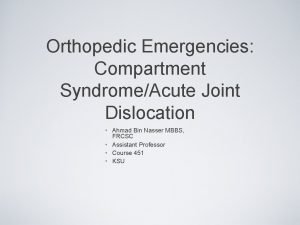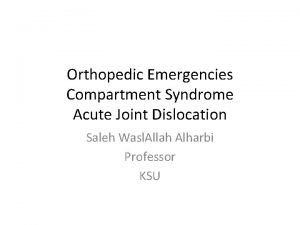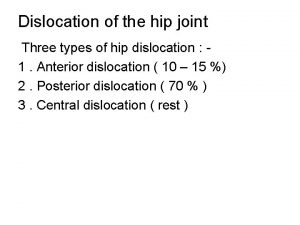Treatment of the Acromioclavicular Joint Dislocation with External
























- Slides: 24

Treatment of the Acromioclavicular Joint Dislocation with External Fixation Device Chelnokov A. N. Tyrtseva E. S. Ural Scientific Research Institute of Traumatology and Orthopaedics, Ekaterinburg, Russia

Background • To date there has been no consensus about optimal treatment of the traumatic dislocation of the acromio-clavicular joint.

Many treatment modalities for the ACJ dislocation • From aggressive surgery…

…to nonoperative management – A Prospective Evaluation of Untreated Acute Grade III Acromioclavicular Separations. T. F. Schlegel. The American Journal of Sports Medicine 29: 699 -703 (2001): – 20 of the 25 patients completed the 1 -year evaluation and strength-testing protocol; – objective examination and strength testing of the 20 patients revealed no limitation of shoulder motion in the injured extremity and no difference between sides in rotational shoulder muscle strength

• Aim of this study was to estimate capabilities of small wire monolateral external fixator for closed treatment of complete acromioclavicular dislocations.

Material and methods 6 10 8 • 24 patients – 14 male – 10 female • 3, 2 days after the injury (0 -14)

External Fixation • G. S. Sushko, G. A. Ilizarov, 1977, 1979

Surgery and post-op period • 10 -30 minutes • Regional anesthesia • Discharge in 1 -2 days • Sling for 1 -3 days

Duration of fixation • 4 weeks for acute cases (fixation within 05 days after the injury), • 6 -8 weeks for delayed admission (6 -14 days) • In cases of dislocations older 2 weeks => AC and CC ligaments repair by tendon allografts • Stability test before hardware removal

Results • Self-care, light housework – 3 -5 days • Deep infection 0/24 – 10 patients (42%) sustained skin irritation and serum drainage from acromial wire site only • 23/24 healed – 1/24: missed acromial wire cut-out => symptomatic instability => AC+CC repair (allo tendons) => uneventful healing • 1 year follow up - 15 patients. – All restored their pre-injury status – Occasional pain in hyperabduction – 3/15

Rockwood type V injury


After 6 weeks

Result

Neer Type II injury



Follow-up (3 year)

Follow-up (3 year)

Follow-up (3 years) Affected side

Discussion: Advantages of the technique • Controllable fixation – With ex-fix we control the situation, without it the situation controls us • Minimally invasive – Fast recovery – Good cosmetic effect • Minimal time and efforts • Short learning curve

Discussion: Disadvantages • Temporary discomfort, decreased quality of life • Pin site care, outpatient visits necessary • Hardware removal

Conclusion • External fixation can be technique of choice for acute cases where operative treatment is indicated

Thank you http: //weborto. net
 Dislocation glide vs climb
Dislocation glide vs climb Cabeza medial del triceps braquial
Cabeza medial del triceps braquial Musculo de la cintura
Musculo de la cintura Humerus
Humerus Articulacion peroneotibial superior
Articulacion peroneotibial superior Joint type
Joint type Lamb carcass grading
Lamb carcass grading What type of joint is the intervertebral joint
What type of joint is the intervertebral joint Plane joint
Plane joint Semi permanent joint
Semi permanent joint Memorandum joint venture account format
Memorandum joint venture account format Lamb grading
Lamb grading External-external trips
External-external trips Difference between edge and screw dislocation
Difference between edge and screw dislocation Fr. colli humeri l. sin
Fr. colli humeri l. sin Dislocation loop
Dislocation loop Theoretical shear stress
Theoretical shear stress Edge dislocation
Edge dislocation Hemarthrosis
Hemarthrosis Stimson method
Stimson method Nursing management of sprain
Nursing management of sprain Weak abductors
Weak abductors Dislocation glide vs climb
Dislocation glide vs climb Gonarthrosis arthrosis of knee
Gonarthrosis arthrosis of knee Dislocation energy
Dislocation energy
